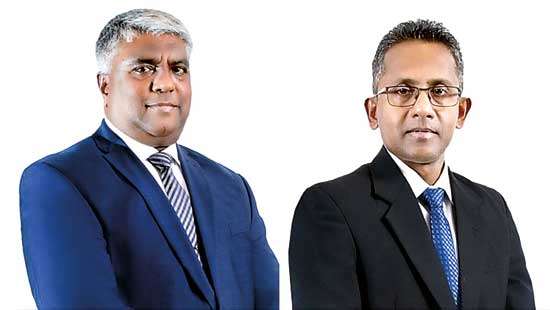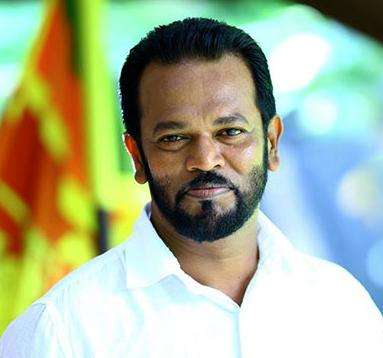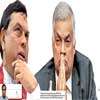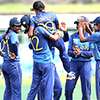As a schoolboy, Tony had been too shy to take part in plays but as a grownup, he yearned to be an actor. Even as a schoolboy he had been enamoured of acting but his shyness had stood in the way. But now the acting bug bit him hard. He was drawn towards acting
Tony is one of the few actors in our country who uses facial expressions in whatever role he plays in the most natural way. This makes him so unique
Tony’s cherished ambition to blaze a name for himself on the silver screen remained unfulfilled for many years. He went for interviews and auditions but was unsuccessful. The yearning to act on screen was stirring within him but try as he might, Tony just could not get that lucky break he was hoping for
He had finally made his entry into films as an actor and that too in one of the finest movies made by the greatest director in Sinhala cinema. It was as if all his earlier failures to get into films had been due to divine providence
There is no denying that ‘Delovak Athara’ launched Tony to instant fame. The advent of Tony Ranasinghe on the Sri Lankan film scene brought about a refreshing change in Sinhala films
By
D. B. S. Jeyaraj
In keeping with the practice of devoting at least one article each month to a cinema-related topic, this column focuses on the popular Sinhala film actor Tony Ranasinghe this week. As an ardent aficionado of Sinhala films I have seen and savoured many of the dashing and debonair Tony Ranasinghe’s films with delight. My all-time favourite Sinhala film hero was and forever will be Gamini Fonseka. However, this fondness for Fonseka has not prevented me from enjoying performances by others such as D.R. Nanayakkara, Joe, Tony, Wickrama, Vijaya, Ravindra, Sanath, Dharmasiri and Kamal.
Sinhala cinema began moving away from Indian “masala” influence and started coming into its own in the sixties and seventies of the last century. Four great male actors made their mark in that golden phase of Sinhala moviedom. They were, in alphabetical order – Joe Abeywickrama, Gamini Fonseka, Vijaya Kumaratunga and Tony Ranasinghe. Alas! All four famous thespians are no more now.

The first to depart was the youngest of them all, Vijaya Kumaratunga, who was born in 1945. His life was brutally snatched away in 1988. Vijaya who had begun engaging effectively in politics was assassinated. Gamini Fonseka, born in 1936, passed away in his sleep in 2004. Veteran Joe Abeywickrama, who was born in 1927, died ten years ago in 2011.
The last of the legendary four – Tony Ranasinghe – bade farewell to his numerous fans six years ago on June 16, 2015. He was born on July 31, 1937. This article therefore will commemorate both Tony’s death and birth anniversaries. The multi-talented, multi-faceted Tony was a lovable personality about whom I have written before. I shall be relying on some of my earlier writings for this article which will have two key focal points. One will be about the making and launching of Tony’s actor career on stage and screen. The other will examine his screen persona dualism of enacting both romantic hero roles as well as character actor parts.
Ranasinghe Hettiarachchilage Ignatius Anthony Silva was born on July 31, 1937 in Mutwal (the anglicised name for Modera/Muhathuvaaram). He was the second of eight children born to Dona Lucia Catherine and Emmanuel Cyril Silva who were both of the Roman Catholic faith.
“Anthony de Silva”
Young Anthony studied at the Catholic institutions of St. John’s mixed school and De La Salle College in Mutwal. In between, there was a stint at St. Anthony’s College in Wattala. Tony was known as Anthony de Silva at school then. He was very shy and never, ever acted in a school play in those days. He was interested in cricket and also read voraciously. He wanted to be a writer. At one stage he even thought of entering the priesthood. Since he was known as Anthony during his schooldays, his nickname was “Anta” derived from Anthony. This led to his classmates teasing him “Anta Panta Pol Panta” in those days.
Anthony de Silva (Tony Ranasinghe) quit studies while in the SSC (Senior School Certificate) class at De La Salle College when he and his classmates were instructed to memorise the Bible in full. Tony objected to this strongly and had a fiery argument with the school director, a European Catholic Priest.
He dropped out of school and enrolled at Commercial College where he studied short-hand, typing, and bookkeeping. Being weak in arithmetic, Tony failed in bookkeeping but obtained a London City and Guilds Certificate in shorthand and typewriting. He could take down shorthand at 80 words a minute and type 40 words in 60 seconds.
As an aspiring stenographer, Tony tried finding a permanent job in many places. He tried to be a Hansard reporter in Parliament as well as a court reporter. Finally, he got a permanent job as an English stenographer at the Department of Government Electrical Undertakings, which later became known as the Ceylon Electricity Board. With secure employment assured Tony got married to Sirima Indrani Wickremasuriya and began raising a family. The couple went on to have four children and six grandchildren.
As a schoolboy, Tony had been too shy to take part in plays but as a grownup, he yearned to be an actor. Even as a schoolboy he had been enamoured of acting but his shyness had stood in the way. But now the acting bug bit him hard. He was drawn towards acting.
“Apey Kattiya”(Our Group)
Impelled by a compulsion to act, Tony began seeking out opportunities to act. Tony’s brother Ralex was extremely supportive of his sibling’s ambition to be an actor. Ralex’s efforts to launch his brother as a film actor were not very successful but he did help Tony get a break as a stage actor. A bunch of young bilingual enthusiasts of the arts, literature, and cinema formed themselves into a group called “Apey Kattiya” or “Our Group”.
Among these were persons like Cyril B. Perera, Sugathapala de Silva, Dharmasiri Wickremaratna, Vipul Dharmawardene, Augustus Vinayagaratnam and G.W. Surendra. Ralex was also associated with this group. So when Sugathapala de Silva wrote the play ‘Boarding Karayo’ about people in a boarding house or chummery to be put on the boards by “Apey Kattiya”, Ralex was able to get his brother an opportunity to play a part in it.
Ralex had already changed his surname de Silva of Portuguese origins to the more Sinhala-sounding Ranasinghe. He wanted his brother Anthony de Silva also to do the same. Ralex felt that such a name change would help him in an acting career. He wanted his brother to be named Tony Ranasinghe like the Hollywood actor Tony Curtis. Anthony de Silva was willing to transform himself as Tony Ranasinghe but kept procrastinating because of the cumbersome legal procedures involved in changing a name officially.
Meanwhile, Sugathapala de Silva who also preferred the name Tony Ranasinghe to Anthony de Silva started using the name Tony Ranasinghe in preparing publicity materials for ‘Boarding Karayo’.
Realising he had to change his name quickly, Tony consulted the chief clerk at his office seeking advice on how to go change his name quickly. He was pleasantly surprised when told that as a Government servant, all he had to do was to inform the Shroff formally of the name change. This he did immediately and by the time ‘Boarding Karayo’ opened, Anthony de Silva had legally turned into Tony Ranasinghe.
Sugathapala de Silva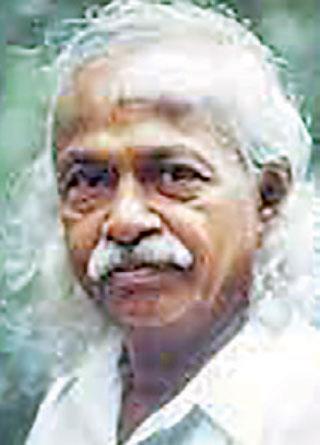
‘Boarding Karayo’ featuring G.W. Surendra and Prema Ganegoda among others, was Tony Ranasinghe’s stage debut. It was a roaring success and soon “Apey Kattiya” went on to produce more plays. Sugathapala de Silva wrote ‘Thattu Geval’ with almost the same cast as that of ‘Boarding Karayo’.
Then came another play by Sugathapala, ‘Harima Badu Hayak’ adapted from ‘Six characters in search of an author,’ the meta-theatrical absurdist drama by Luigi Pirandello. Tony Ranasinghe acted in all three plays by Sugathapala de Silva and earned much praise from the playwright, critics and rasikas. In describing the actor, Sugathapala said: “Tony Ranasinghe is one of the few actors in our country who uses facial expressions in whatever role he plays in the most natural way. This makes him so unique.”
Despite the kudos and popularity gained by acting in Sugathapala de Silva’s plays, Tony got his first award for acting in a play by another dramatist. The play was Dharmasiri Wickremaratna’s ‘Ran Thodu’. It had a bold controversial theme relating to premarital sex and consequent loss of virginity.
The play’s plot about the heroine losing her gold earring was metaphorical of her losing her virginity. Tony Ranasinghe and Anula Karunathilaka acted magnificently. The play was a sensation. Both Tony and Anula won the Governor-General’s Award in 1963 for Best Actor and Best Actress in a Drama for their stage performances in ‘Ran Thodu’. Tony was now regarded as an accomplished stage actor but wanted to act in films.
Ralex Ranasinghe
As stated earlier, Tony’s brother Ralex who was then in the advertising world tried very hard to promote his brother as a film actor. Ralex was a very good photographer. Ralex Ranasinghe photographed his brother in many poses and from different angles. He made him dress up and pose like Indian actor Dilip Kumar and Hollywood stars Gregory Peck and Humphrey Bogart and compiled a photo portfolio. This was sent to most prospective filmmakers but to no avail. Incidentally, Tony was an ardent admirer of Dilip Kumar and was greatly influenced by him. In later years Tony translated Dilip’s auto-biography into Sinhala as a labour of love.
Tony Ranasinghe’s cherished ambition to blaze a name for himself on the silver screen remained unfulfilled for many years. He went for interviews and auditions but was unsuccessful. The yearning to act on screen was stirring within him but try as he might, Tony just could not get that lucky break he was hoping for.
At one point Tony heard that Maestro Lester James Peries was going to film Martin Wickremasinghe’s novel ‘Gamperaliya’ and was looking out for actors to play the main roles. Tony rushed to see Lester with his friend Arthur Amarasena the husband of actress Sriyani Amarasena. The Director, however, had picked Henry Jayasena, Gamini Fonseka and Wickrema Bogoda to play the characters Piyal, Jinadasa, and Tissa respectively. Lester chided Tony gently saying the actor should have come to him earlier. Tony returned home dejected.
Baladasa in ‘Gamperaliya’
Fate however had decreed that Tony Ranasinghe should get his first film breakthrough Lester James Peries in ‘Gamperaliya’. What happened was that Lester, Sumitra and Gamini Fonseka came to Lumbini to see the play ‘Boarding Karayo’ at the invitation of Wickrema Bogoda, who was acting in the play and had been selected to act in ‘Gamperaliya’.
Lester was highly impressed by the performance that he thought of casting some of the ‘Apey Kattiya’ actors for minor roles in his film. Thus Anula Karunathilaka, G.W. Surendra and Tony Ranasinghe were given small roles in ‘Gamperaliya’. Tony was elated. His cherished desire to act in a film was realised.
Tony Ranasinghe got the role of Baladasa. Many scenes featuring Tony were shot but when the final version was completed, several Baladasa sequences were edited out. Tony was disappointed but not depressed. He had finally made his entry into films as an actor and that too in one of the finest movies made by the greatest director in Sinhala cinema. It was as if all his earlier failures to get into films had been due to divine providence.
Lester and Sumitra Peries
It however was destined that Tony Ranasinghe’s film career should commence with Lester James and Sumitra Peries. The cinematic journey of Tony Ranasinghe began with ‘Gamperaliya’ released on December 20, 1963. Tony Ranasinghe’s Baladasa portrayal amounted to a cameo role only in ‘Gamperaliya’. But maestro Lester James Peries decided to cast him in the main role in his 4th feature film ‘Delovak Athara’ (Between Two Worlds).
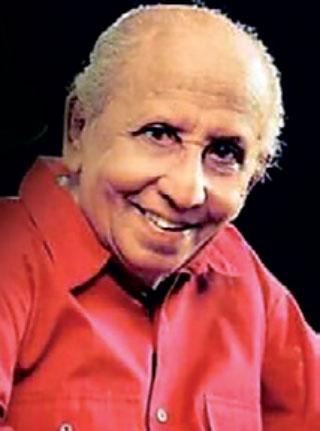
The film ‘Delovak Athara’ made on a Rs. 200,000 budget was released on May 24, 1966. Tony Ranasinghe essayed the role of Nissanka in the movie. Lester James Peries in the book ‘Lester by Lester’ comprising interviews conducted by Kumar de Silva speaks highly of Tony. Lester recalls as follows: “I think it (the film) made Tony Ranasinghe into a big star. Tony was an enormous success in that role. It was not the conventional Sinhala hero but a new kind of a modern hero. He was very good-looking at that time. The film made him so popular that a whole lot of offers came his way immediately.”
There is no denying that ‘Delovak Athara’ launched Tony to instant fame. The advent of Tony Ranasinghe on the Sri Lankan film scene brought about a refreshing change in Sinhala films.
Both a Lead and Character Actor
What was most remarkable about Tony Ranasinghe’s thespian skills was that he was both a lead and character actor. A character actor according to dictionary definition is an actor who specialises in playing eccentric or unusual people rather than leading roles in films. A character actor plays unusual, strange or interesting characters instead of being the main character.
The question then arises as to who or what is a character actor? In a sense are not all actors including those in lead roles playing a character? Therefore are not lead actors also character actors? Are we to then demarcate a line between lead roles and supportive roles and define a character actor as someone who is not the actor playing the lead role?
A clear-cut definition is not always possible but one is always able to distinguish between a lead actor and character actor when you see the film. It may be difficult to rigidly demarcate who a character actor is but the performances by actors on screen do give a good indication. The lead roles in films are very often repetitive and the actors playing them often become typecast. Even those playing supportive roles of the same kind can become “typecast actors”.
In contrast, the role of a character actor as opposed to that of a typecast actor is an evolving one and therefore changes constantly from film to film. Particular actors are chosen to play specific roles because filmmakers believe that such and such an actor can do full justice to that part. They are selected because the director and casting directors opine that a particular actor is best suited to personify the character in question. Even if such roles have been played before, the director is confident that the selected actor can play the character with a distinctive difference.
In the case of Sinhala cinema, actors like Gamini Fonseka, Vijaya Kumaratunga and Ravindra Randeniya can be classified as lead actors. Actors Henry Jayasena, Joe Abeywickrama and D.R. Nanayakkara can be categorised as character actors. These spheres are generalised definitions. Both groups of actors have occasionally strayed into the other sphere but they could be generally classified into these broad categories.
Tony Ranasinghe however was of a different breed. Tony was both a lead and character actor. Of the 119 films he has acted in a film career spanning more than five decades, Tony has played the lead actor in 47 and character actor roles in 72. He has played not only the romantic lover in many films but has also acted in many other roles including that of the dastardly villain. Versatility was his forte. Variety was his hallmark.
“King” Gamini and “Queen” Malani
Appreciation from one’s peers is perhaps the greatest form of praise one can get. In Tony’s case, both Gamini Fonseka and Malani Fonseka the “King” and “Queen” of Sinhala film actors in their heyday have showered lavish praises on him in newspaper interviews.
In an interview in 2004, Gamini Fonseka lavished praise on Tony Ranasinghe: “Tony as an actor is the best character-based actor not even witnessed in the Indian screen. He has an actor within himself who emerges at the correct moment. Tony Ranasinghe is the best character actor in Asia.”
Malani Fonseka in an interview given in the aftermath of Tony’s demise said of him: “Tony Aiya was a well-read man of wisdom. Not only as his co-star but also as an outsider, I tremendously enjoyed watching Tony Aiya on the screen and to date I find him the most romantic lover we’ve had in our films. There will never be another Tony.”
It could be seen from these statements by the two Fonsekas that Gamini acknowledges Tony as the “best character actor” while Malani describes Tony Aiya as the “most romantic lover we’ve had in our films”. Very high praise indeed! But then Tony is worthy of such praise and deserves it fully. The comments by the Fonseka duo also draws attention to the dynamic duality of Tony Ranasinghe. Gamini and Malani complement each other in complimenting Tony.
Tony Ranasinghe is one actor in Sinhala cinema who has straddled both spheres of lead roles and character roles simultaneously from the time he burst on screen. Tony played the lead role which was very often that of the romantic lover perfectly in several films, thereby fitting Malani’s description. Tony also played non-hero character actor roles with finesse in many films, thus deserving the kudos heaped upon him by Gamini.
Most Lovable Actor
Tony Ranasinghe was one of Sri Lankan cinema’s handsome and most lovable actors. He acted in diverse roles ranging from romantic lovers to affectionate fathers and won awards for acting in both films and plays. Tony also made the smooth transition from stage to screen and later from the big screen to the small screen. He shone on TV too as an actor and scriptwriter. Likewise, he wrote the screenplay and dialogues for some films too. In later life, he transformed into a playwright translating and adapting many works of William Shakespeare into Sinhala. The spontaneous outpouring of grief and sorrow at his demise illustrated the esteem and regard with which Tony Ranasinghe was held.
D.B.S.Jeyaraj can be reached at dbsjeyaraj@yahoo.com







